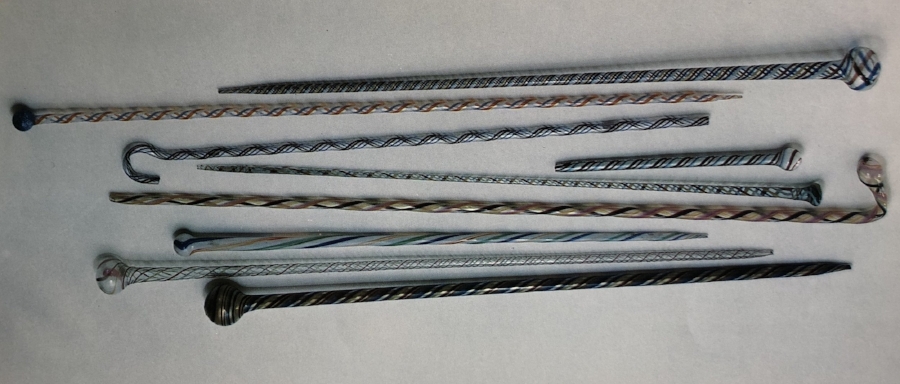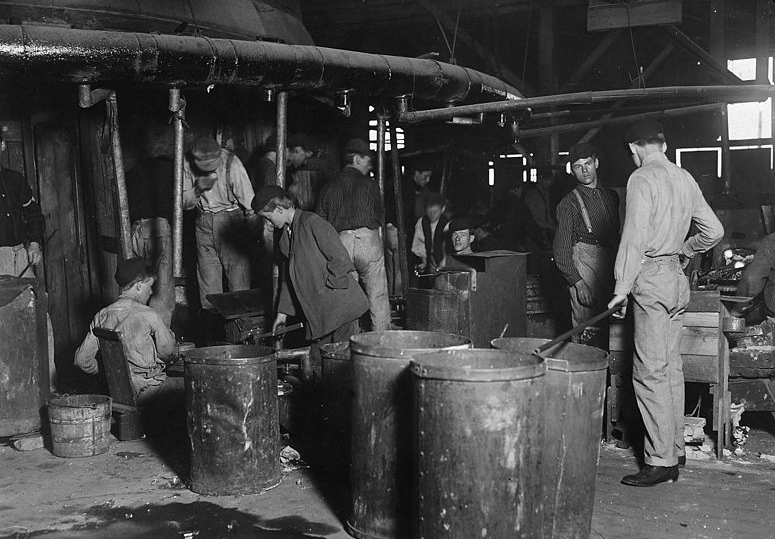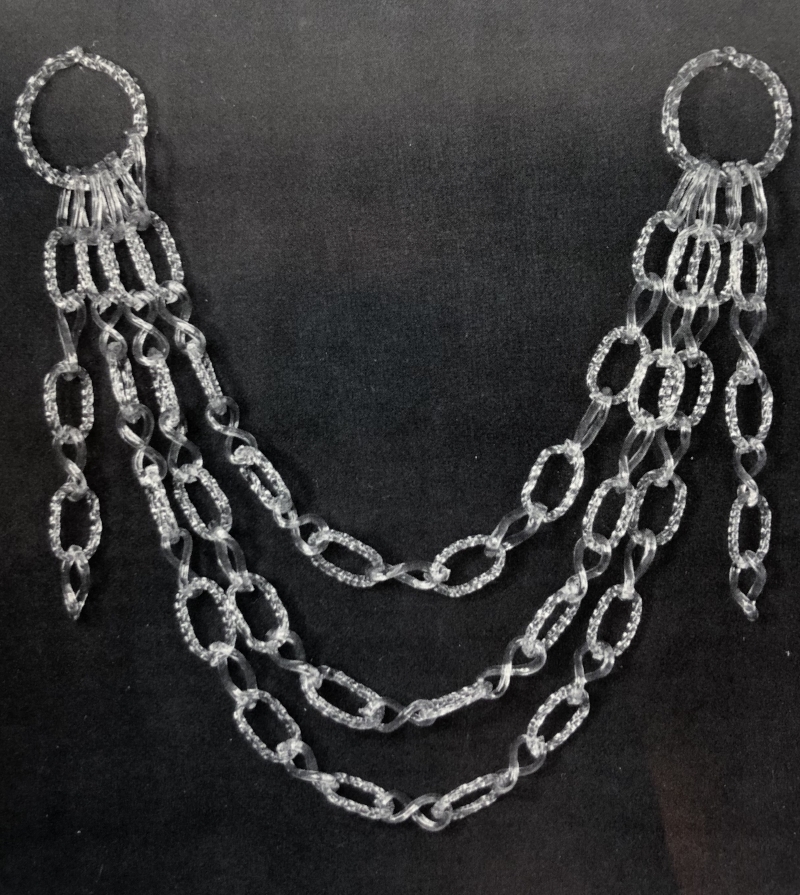whimsies.
whimsies
A selection of blown hollow glass candy stripe canes and batons
As is very often the case with antiques, an already memorable object is usually made even more so upon discovering its backstory. There’s something magical about learning how something was originally used - a low Japanese wooden bench once used for cutting kimonos, spindly silver decorative insects once used to create still lives, a theater ticket in a vintage coat pocket revealing secrets of a past life. End-of-day objects completely captured my imagination when I first learned of their history.
“The creation of whimsies was considered one of a glassworker’s very few special privileges, allowing them creative freedom and an outlet for experimentation.”
A term for pieces made by a glassworker in their own time at the end of their shift, ‘end-of-day’ items were usually created from the molten glass that remained in the pots when production had finished for the day. Also known as ‘friggers’ or ‘whimsies’, they are entirely impractical yet utterly wonderful decorative glass objects such as walking sticks, hats, boots, bells, small animals and even swords or rolling pins.
Glass work was difficult because of the heat, the dusty air and the pressure to create a certain number of pieces a day. The creation of whimsies was considered one of a glassworker’s very few special privileges, allowing them creative freedom and an outlet for experimentation. Though end-of-day objects were never made for production and were only produced in small quantities if not as one-offs, it’s very possible that the experimentation allowed by their creation actually provided the basis for many items later put into production.
Workers at Wheaton Glass Works, New Jersey
Usually extremely well made and often exquisitely detailed, whimsies were sometimes sold by workers to generate extra income. In parts of Britain (Stourbridge and Nailsea, for example) they were displayed in Sunday parades and galas. But while the creation of whimsies was an opportunity for a glassworker to show off their skills, one problem they faced was preventing someone else from taking them. A piece had to be cooled overnight so whoever was first to get to work the next morning could simply swipe it should they feel so inclined.
The production of whimsies reached its height in the 19th century, extending into the 20th century until machines took over production at glass factories and glass was no longer accessible to glass blowers. While color can provide a clue to where a particular piece was made, end-of-day pieces are unmarked which makes identification and dating difficult - if not impossible. That they are judged entirely on their beauty and quality over their age and precise origin only serves to further add to their magic.
A twisted chain link aqua glass swag








